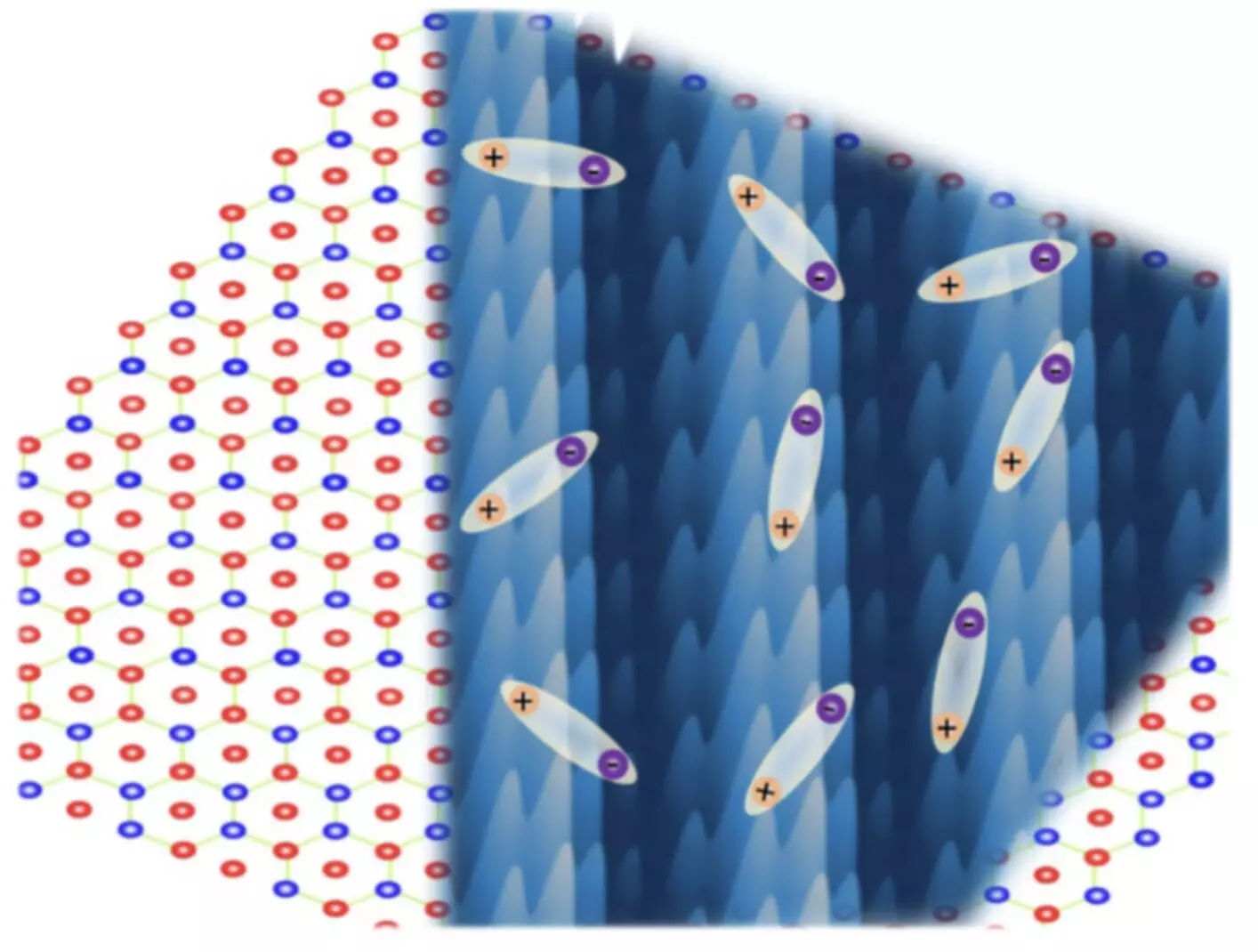The discovery and understanding of new quantum phases in materials is a crucial area of research in the field of physics. One of these fascinating phases is the excitonic insulator, which arises from the condensation of excitons with non-zero momentum. Recently, a team of researchers from various institutions, including Shanghai Jiao Tong University, explored the possibility of the metal-insulator transition in the atomically thin semi-metallic material HfTe2. Their findings, published in Nature Physics, shed light on the existence of excitonic charge density waves (CDW) and metal-insulator transitions in this unique material.
The formation of charge density waves in materials can occur through various mechanisms. To confirm the existence of an excitonic insulator, it is crucial to exclude other potential formation mechanisms. Previous studies by the research team focused on exploring this phenomenon in two-dimensional transition metal dichalcogenides. However, lattice distortion was observed in these materials, suggesting that it may not be the primary driving force behind the excitonic insulator formation. Building on these previous works, the researchers shifted their attention to investigating the presence of CDW and metal-insulator transitions in thin films of HfTe2.
To validate their observations, the researchers conducted phonon calculations on single-layer HfTe2. The calculations indicated that structural instability was not present in the material. Furthermore, Raman and X-ray diffraction measurements did not reveal any significant lattice distortions, providing strong evidence for the electronic origin of the metal-insulator transition in single-layer HfTe2.
Exciton condensation is known to be highly sensitive to carrier concentration near the Fermi surface. In the case of HfTe2, the researchers discovered that a small amount of n-type doping significantly increased the transition temperature of the material. This observation separates HfTe2 from other transition mechanisms like Peierls-type CDW. The sensitivity to carrier concentration highlights the unique properties of exciton condensation and its potential in HfTe2 as an excitonic insulator.
Based on their recent findings, the research team suggests that atomically thin HfTe2 could be the first natural solid with a purely electronic origin of excitonic insulators. The researchers have thoroughly validated their results through various calculations and analyses. By reducing the dimensionality of the material, the screening effects around the Fermi level are decreased, favoring the condensation of excitons. The team successfully prepared single-layer and multi-layer HfTe2 thin films, revealing a metal-insulator transition in films thinner than three layers. The formation of a flat band at the valence band top and the appearance of folded bands near a specific point are characteristic features of CDW formation.
The discovery of the excitonic insulator in atomically thin HfTe2 paves the way for further investigations into exotic quantum effects that arise from the interaction between excitonic insulating states and other orderings. This includes studying the influence of excitonic insulators on topology and spin-correlated states. In future work, Peng and his colleagues plan to delve deeper into the quantum insulator phase they observed in HfTe2, aiming to gain a comprehensive understanding of its underlying physics. By studying excitonic insulators, researchers can unravel key insights into phenomena like high-temperature superconductivity and superfluidity, which have immense importance in the field of physics.
The research conducted at Shanghai Jiao Tong University and other institutes demonstrated the presence of excitonic charge density waves and metal-insulator transitions in atomically thin HfTe2. By excluding other potential formation mechanisms, the team identified the electronic origin of this unique quantum phase. The sensitivity of exciton condensation to carrier concentration near the Fermi surface and the absence of lattice distortions further support the existence of an excitonic insulator in HfTe2. This discovery opens doors for future investigations into the potential quantum effects arising from excitonic insulating states and their interaction with other orderings. The study of excitonic insulators holds immense importance in understanding phenomena like high-temperature superconductivity and superfluidity, presenting exciting opportunities for scientific advancements in the field of physics.



Leave a Reply